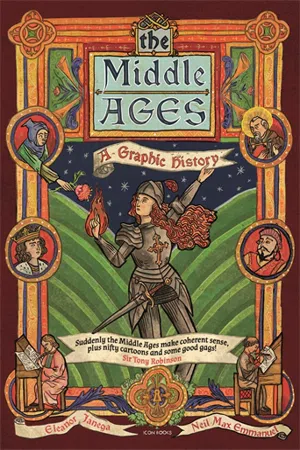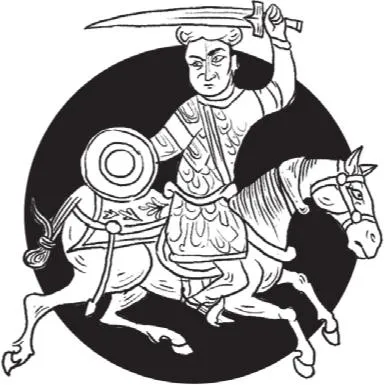
- 176 pages
- English
- ePUB (mobile friendly)
- Available on iOS & Android
About this book
A unique, illustrated book that will change the way you see medieval history The Middle Ages: A Graphic History busts the myth of the 'Dark Ages', shedding light on the medieval period's present-day relevance in a unique illustrated style. This history takes us through the rise and fall of empires, papacies, caliphates and kingdoms; through the violence and death of the Crusades, Viking raids, the Hundred Years War and the Plague; to the curious practices of monks, martyrs and iconoclasts. We'll see how the foundations of the modern West were established, influencing our art, cultures, religious practices and ways of thinking. And we'll explore the lives of those seen as 'Other' - women, Jews, homosexuals, lepers, sex workers and heretics.Join historian Eleanor Janega and illustrator Neil Max Emmanuel on a romp across continents and kingdoms as we discover the Middle Ages to be a time of huge change, inquiry and development - not unlike our own.
Frequently asked questions
- Essential is ideal for learners and professionals who enjoy exploring a wide range of subjects. Access the Essential Library with 800,000+ trusted titles and best-sellers across business, personal growth, and the humanities. Includes unlimited reading time and Standard Read Aloud voice.
- Complete: Perfect for advanced learners and researchers needing full, unrestricted access. Unlock 1.4M+ books across hundreds of subjects, including academic and specialized titles. The Complete Plan also includes advanced features like Premium Read Aloud and Research Assistant.
Please note we cannot support devices running on iOS 13 and Android 7 or earlier. Learn more about using the app.
Information



The Fall of Rome


Roman Successor States




The Byzantine Empire

Table of contents
- Title Page
- Contents
- Introduction: Common Misconceptions about the Middle Ages
- Part 1. Roman Inheritance
- Part 2. Early Religions
- Part 3. The Rise of Empire and Kingship
- Part 4. Life around the Year 1000
- Part 5. The High Middle Ages
- Part 6. The “Other” in the Medieval Period
- Part 7. The Late Medieval Period
- Part 8. The End of the Middle Ages
- Conclusions
- Acknowledgements
- Further Reading
- Copyright